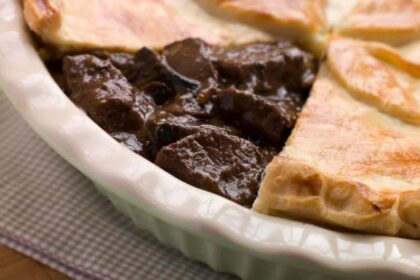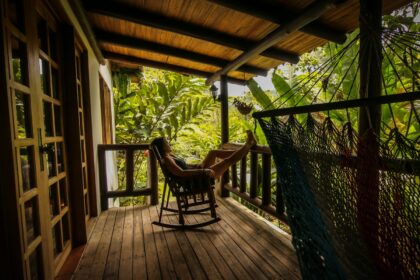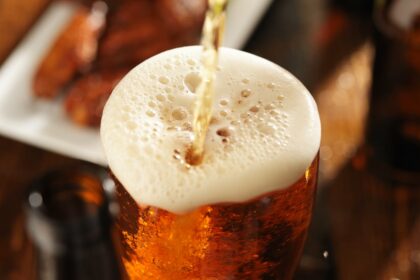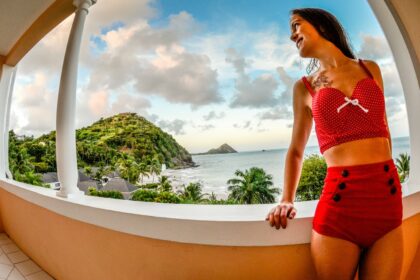After spending a day exploring the historic center of Quito, Ecuador, I decided to get out of town for a day and explore the smaller artisan villages nearby. Because I was so thrilled with my Cajas National Park Tour and Quito City Tour with Gray Line Ecuador, I decided to go through them again for their Otavalo Market Tour.

Next we stopped at the small village of Calderon, a parish of Quito. This area is well known for its production of masapan. They have a special ceremony here to worship their dead. In the past, they would bury a dead husband with their still-living wife. Thankfully, they don’t do this anymore. Now, on The Day Of The Dead, November 2, indigenous people visit the cemetery and eat with the deceased. The special foods eaten are colada morada, a red drink which represents blood, and wawa de pan, a girl-shaped bread. To turn it into a handicraft, the bread is coated in glue, giving it a clay-like texture, and making masapan. We got to visit a special shop and see this and other handicrafts being made.
Before heading to Otavalo, we stopped for a natural viewpoint and also talked a bit about the landscape. During Pangea, Ecuador and Africa were connected, which is evident by the dry landscape and similar plants. The most important plants for indigenous cultures are the green and blue panco. While they produce clothes from green panco, blue panco gives them the ability to produce shuarmiski , a typical indigenous alcohol.
We also stopped just before Otavalo to see how panama hats are made, and taste some typical foods. If you’re doing this on your own, it’s on the right side of the Pan-American Highway, and you’ll see a giant green shop with a sign reading “Mira Lage Parador Turistico”. It was interesting to feel the different qualities of Panama hats. The cheaper ones were definitely a lot less durable than the more expensive varieties.
The group got to taste some typical cheeses, biscuits, and dulce de leche, which made an odd but delicious combo.
Likewise, stop offered panoramic views of Sambo Lake, Imbabura Volcano, and surrounding mountains.
For a special treat, two indigenous girls from Otavalo came onto the bus to teach us about traditional dress, sell beautiful scarves, and sing us songs in their native language of Catchua. First we learned their alpaca shoes are always black or blue. Moreover, for indigenous women in Otavalo, you can tell their marital status by looking at their head shawl, or fachalina. A knot tied on the shoulder means they’re single, and a knot tied on the heart means they’re married. Additionally, their jewelry is always yellow to represent the sun and corn, and their bracelets are always red to ward off bad energy.
Next we arrived at the highlight of our tour, the Otavalo Market. Although it’s best to go on a Saturday, Tuesday provided a large market of colorful handicrafts, as well. Some typical items you’ll find are scarves, blankets, instruments, jewelry, bags, stuffed animals, hats, headbands, and art. Make sure to have your bartering skills ready, because they’ll always give you their highest offer first.
Our last stop for the day was Cotacachi, a town known for its leather goods. While I’m usually not into this kind of thing, this town has really great leather jackets and bags. If you can pay cash, I’d suggest going to the market in the middle of town, which sells quality goods for a lot cheaper than the shops.
The Gray Line Otavalo Market Tour is $55. Click here if you’re interested in taking it for yourself.
This post was made possible thanks to Gray Line Ecuador
Jessica Festa
Latest posts by Jessica Festa (see all)
- A Culturally-Immersive Adventure In Mongolia’s Altai Mountains - Jul 8, 2023
- This Recipe Sharing Platform Supports Women In The Culinary Industry (Labneh Recipe Included!) - Nov 5, 2020
- Hiking The Mohare Danda Community Eco-Trek In Nepal - Jun 3, 2020
- 6 Important Questions For Choosing A Responsible Yoga Retreat - May 18, 2020
- How To Create & Grow A Profitable Blogging Business (Ethically) - Jan 18, 2020













